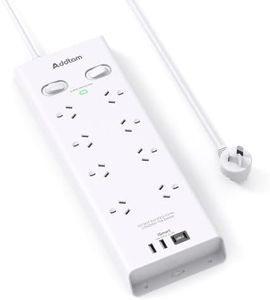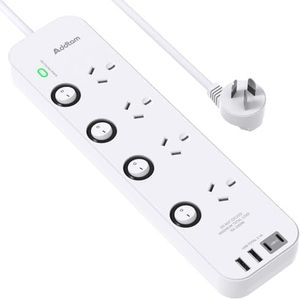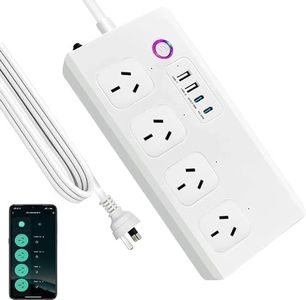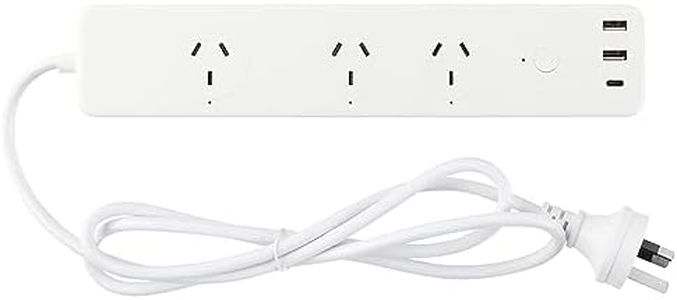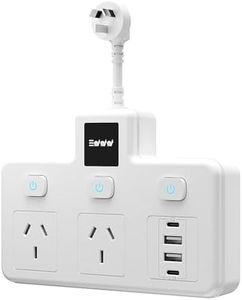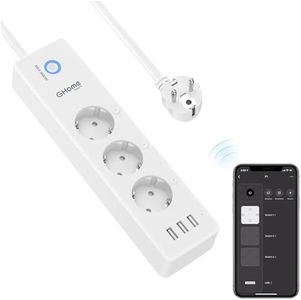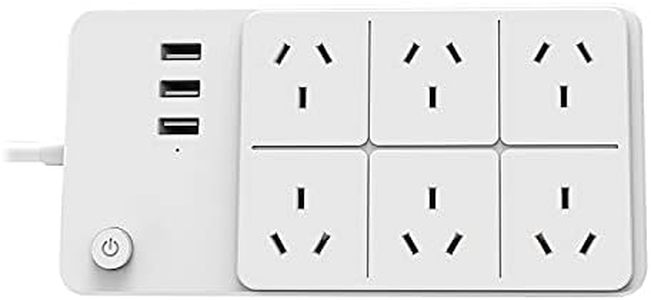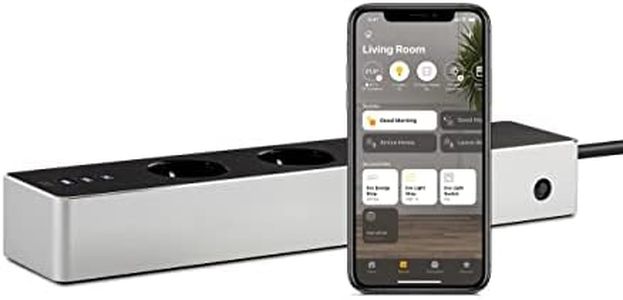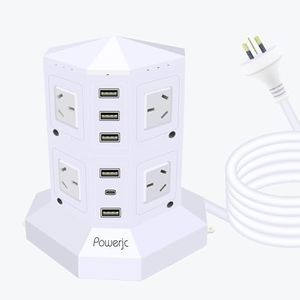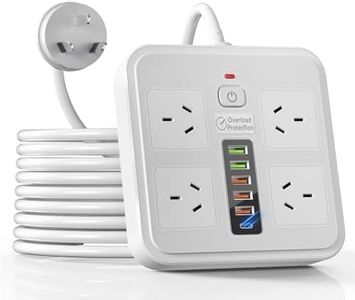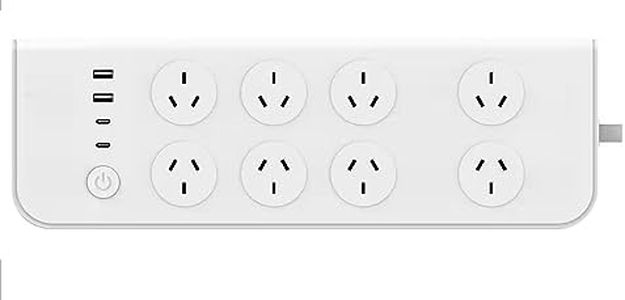We Use CookiesWe use cookies to enhance the security, performance,
functionality and for analytical and promotional activities. By continuing to browse this site you
are agreeing to our privacy policy
10 Best Smart Power Strips
From leading brands and best sellers available on the web.Buying Guide for the Best Smart Power Strips
When choosing a smart power strip, it's essential to think about both your current needs and your potential future devices. Smart power strips not only help you control multiple devices remotely using your smartphone or voice assistants, but they can also help save energy and add a layer of safety. Start by thinking about where you'll use it and what you plan to plug in. Consider how many devices you want to control independently and whether you need features like energy monitoring or scheduling. By understanding the key features, you can better match a smart power strip to your lifestyle and setup.Number of OutletsThe number of outlets is simply how many devices you can plug into the power strip at one time. More outlets mean more devices under smart control, but bigger strips may take up more space. Smaller strips (3-4 outlets) are good for a desktop or nightstand, while larger ones (6-8 outlets) work better for entertainment centers or home offices. Always think about your typical setup and pick one that matches your needs with a little room for future additions.
Individually Controlled OutletsSome smart strips let you control each outlet separately, while others switch all outlets together. Individual control is important if you have a mix of devices and want to turn some on/off without affecting the others. For a simple lamp cluster or group of devices used together, all-at-once control is fine. For a mix of always-on and sometimes-on gadgets (like a monitor that stays on vs. a printer used occasionally), individual outlets add flexibility.
Surge ProtectionSurge protection defends your devices against electrical spikes that can cause damage. Power strips with built-in surge protection are especially important for valuable electronics or in areas prone to lightning or sudden power changes. Not all smart strips have strong surge protection, so consider this if you plan to plug in computers, TVs, or other sensitive devices. If you only need to switch simple lights or fans, surge protection is less crucial.
Connectivity (Wi-Fi, Bluetooth, etc.)Smart power strips connect to your home's network using Wi-Fi, Bluetooth, or sometimes Zigbee/Z-Wave (for smart home hubs). Wi-Fi is most common and lets you control the strip from anywhere with internet access. Bluetooth has a shorter range and is best for simple, local control. If you’re building a smart home with a hub, you might want a strip that supports Zigbee or Z-Wave. Choose based on how you plan to control it—remotely or only nearby.
Energy MonitoringEnergy monitoring tells you how much electricity individual devices or the whole strip is using. This helps users find energy hogs and reduce costs, or just satisfy curiosity about their consumption. If you want to track and manage usage, look for this feature. If you're only interested in on/off control, this may not be necessary.
Voice Assistant CompatibilityVoice assistant compatibility means whether your strip can work with Alexa, Google Assistant, Siri, or others. If you already use a voice assistant or plan to add one, make sure your new smart strip supports it. This lets you control the connected devices by voice, which is convenient for hands-free scenarios. If voice control isn’t your priority, you can skip this spec.
USB PortsSome smart strips come with built-in USB charging ports, letting you power up phones, tablets, and other gadgets directly—no extra adapters needed. If you have lots of USB-powered devices, this can tidy up your charging area. For users with only AC-powered devices, USB ports might be unnecessary.
Scheduling and Automation FeaturesScheduling allows you to set certain devices or outlets to turn on and off automatically at specific times or routines. Automation can include linking to other smart home devices, like turning on a lamp when you get home. If you want to streamline your day or boost security while away, look for strips with strong scheduling and automation capabilities. For simple remote control, this feature is less critical.
